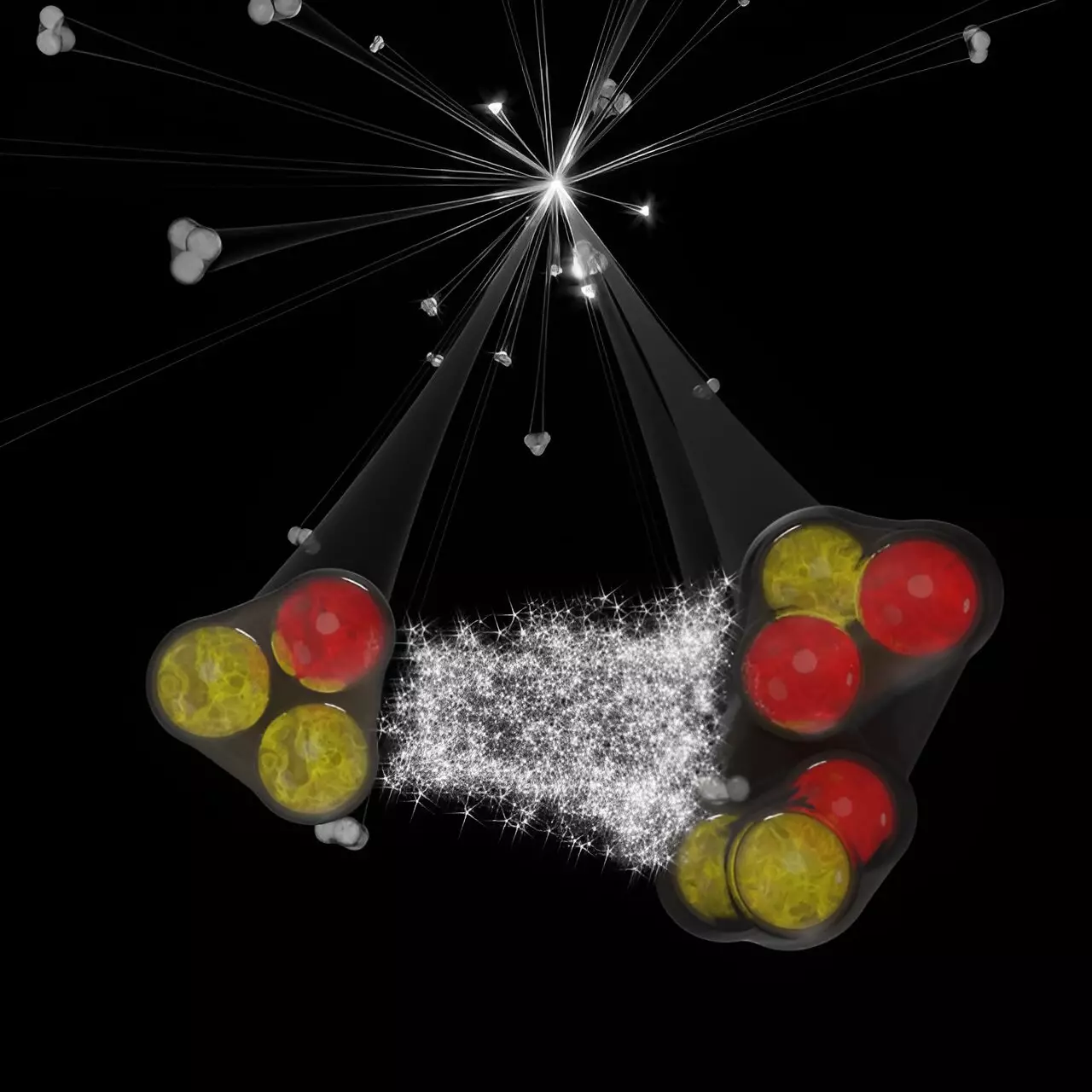Recent advancements in nuclear physics have shed light on the complex interactions that define the behavior of particles at a fundamental level. A notable contribution to this field comes from the ALICE (A Large Ion Collider Experiment) collaboration, which has published an intriguing study in *Physical Review X*. This research focuses on correlations within three-body nuclear systems, specifically examining kaon-deuteron and proton-deuteron interactions. Understanding these interactions is critical, as they play a vital role in fundamental phenomena such as atomic structure and the dynamics of neutron star cores. As researchers grapple with the notoriously intricate nature of multidimensional particle interactions, these findings mark a significant step in deciphering the governing forces within nuclear matter.
In the realm of particle physics, the term “fundamental force” typically refers to the interactions that occur between two particles. However, the intricacies involved when expanding this concept to encompass three particles cannot be underestimated. The ALICE collaboration’s study is poised at this intersection, investigating how individual particle interactions evolve into complex three-body arrangements. This necessitates an in-depth exploration of how particles behave in close proximity, particularly during proton-proton collisions at the Large Hadron Collider (LHC). When two particles originate close together—often within the scale of femtometers (10^-15 meters)—the potential influences on their momentum and trajectory could yield rich insights into the underlying nuclear forces at play.
The methodology employed by the ALICE collaboration is particularly noteworthy. Their analysis led to the development of a correlation function, which quantitatively measures how the likelihood of detecting two particles with specific relative momenta diverges from the expectation of independent behavior. In essence, this function assesses whether the interactions between the particles in question are attractive, repulsive, or neutral. An output value of one would indicate an absence of correlations, while deviations above or below this threshold suggest attractive or repulsive forces, respectively. This framework allows researchers to discern subtle interactions that might otherwise remain obscured.
Insights from the Kaon-Deuteron and Proton-Deuteron Systems
The results from the kaon-deuteron and proton-deuteron correlation studies provide compelling evidence of the underlying dynamics governing three-body systems. Notably, both correlation types exhibited values below unity at low relative transverse momenta, indicative of a predominant repulsive interaction. The study noted that these particles—deuterons and kaons or protons—are generated in close proximity, estimated to be around 2 femtometers apart. While the kaon-deuteron correlations were effectively modeled using a two-body framework that encompassed both Coulombic and strong interactions, the proton-deuteron correlations required a more complex three-body model, thereby acknowledging the nuanced structure of the deuteron itself.
Implications for Future Research
The innovative approach adopted by the ALICE collaboration to explore three-body interactions sets the stage for future investigations across other baryonic systems. This research not only highlights the sensitivity of correlation functions to short-range dynamics but also suggests a potential pathway into previously uncharted territories. As the LHC progresses into its next phases (Runs 3 and 4), there is an anticipation of applying similar analysis techniques to explore three-baryon systems within the strange and charm sectors—areas that have largely been experimentally elusive.
The work published by the ALICE collaboration is a testament to the dynamism and complexity of particle interactions in high-energy physics. By delving into the correlations of kaon-deuteron and proton-deuteron systems, researchers are unraveling fundamental aspects of nuclear forces that hold implications for our broader understanding of the universe. As data collection continues at the LHC, the prospect of revealing more about the intricate nature of nuclear matter remains tantalizing and represents a vital pursuit within contemporary physics. Through such collaborative efforts, the foundational questions of nuclear interactions are being addressed, fostering an era of unprecedented discoveries in particle physics.


Leave a Reply